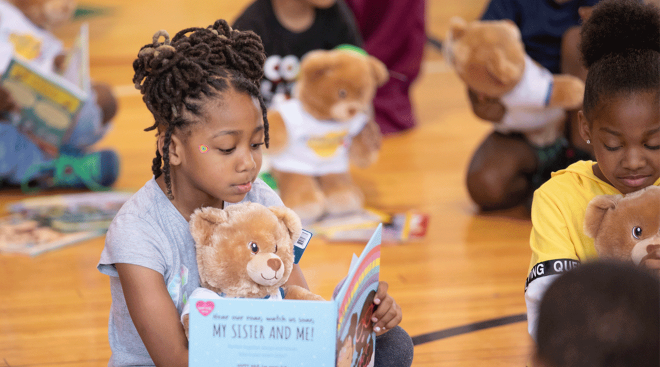Singing to Baby Is Crucial for Language Learning, Study Says
Whether you love each evening’s lullabies and nursery rhymes or dread in-car sing-a-longs a new study shows that your daily song routine may be more beneficial to baby than you would think.
Researchers from the University of Cambridge have found that singsong speech plays a vital role in facilitating baby’s language learning. The study suggests that rhythmic information, specifically the modulation of tone observed in nursery rhymes or songs, is instrumental in the process, and it’s not hard to see why. From simple sing-song rhythms present in the alphabet to songs used when learning a foreign language, what starts as a simple tune can easily guide you from one word to another and stick in your head for years to come.
For the study researchers recorded patterns of electrical brain activity in 50 infants at four, seven and eleven months old as they watched a video of a teacher singing 18 nursery rhymes to a baby. These low frequency bands of brainwaves were fed through a special algorithm, which produced a ‘read out’ of the phonological information that was being encoded.
The researchers found that phonetic encoding in babies emerged gradually over the first year of life, beginning with labial sounds (e.g. d for “daddy”) and nasal sounds (e.g. m for “mummy”), with the ‘read out’ progressively looking more like that of adults. The findings, published in the journal Nature Communications come as stark contrast to the previously held theory that phonetic information (think Hooked on Phonics) is the key to the language development.
“Our research shows that the individual sounds of speech are not processed reliably until around seven months, even though most infants can recognise familiar words like ‘bottle’ by this point,” said Cambridge neuroscientist, Professor Usha Goswami in a press release. “From then individual speech sounds are still added in very slowly – too slowly to form the basis of language.”
The researchers believe this sing-song technique rhythmic speech helps babies learn language by emphasizing the boundaries of individual words and is effective even in the first months of life. “We believe that speech rhythm information is the hidden glue underpinning the development of a well-functioning language system,” said Goswami. “Infants can use rhythmic information like a scaffold or skeleton to add phonetic information on to.”
As an example Goswami notes that the “rhythm pattern of English words is typically strong-weak, as in ‘daddy’ or ‘mummy’, with the stress on the first syllable.” Using this built-in knowledge that comes from listening to rhythmic patterns they can better guess where one word ends and another begins.
“Parents should talk and sing to their babies as much as possible or use infant directed speech like nursery rhymes because it will make a difference to language outcome,” she added. This isn’t the first time positive effects have been connected with singing to baby either. Previous research has suggested that singing to baby can help with emotional regulation and even improve their health.
So keep those songs coming!
Navigate forward to interact with the calendar and select a date. Press the question mark key to get the keyboard shortcuts for changing dates.





















































